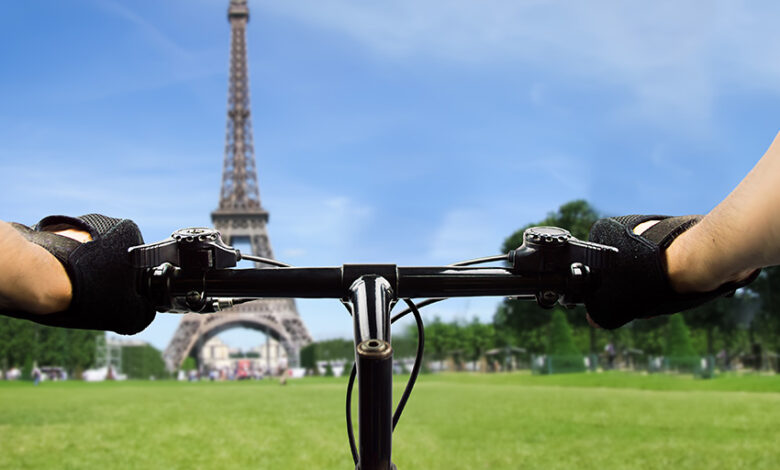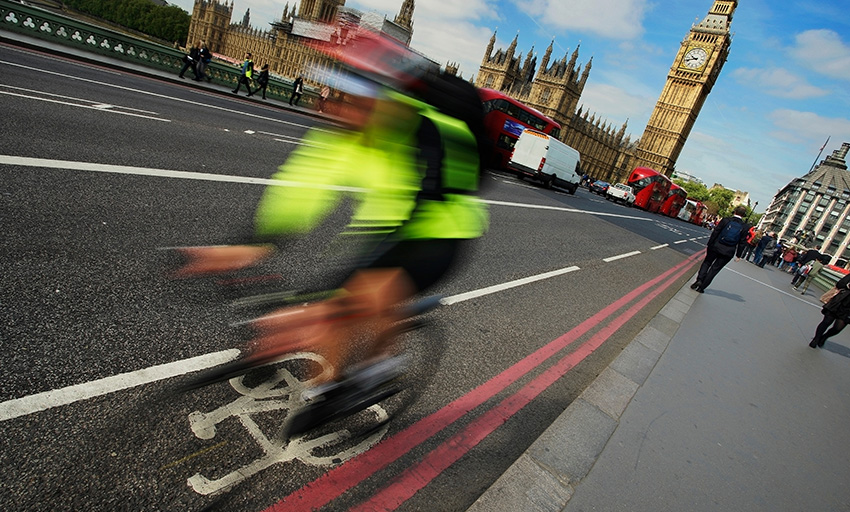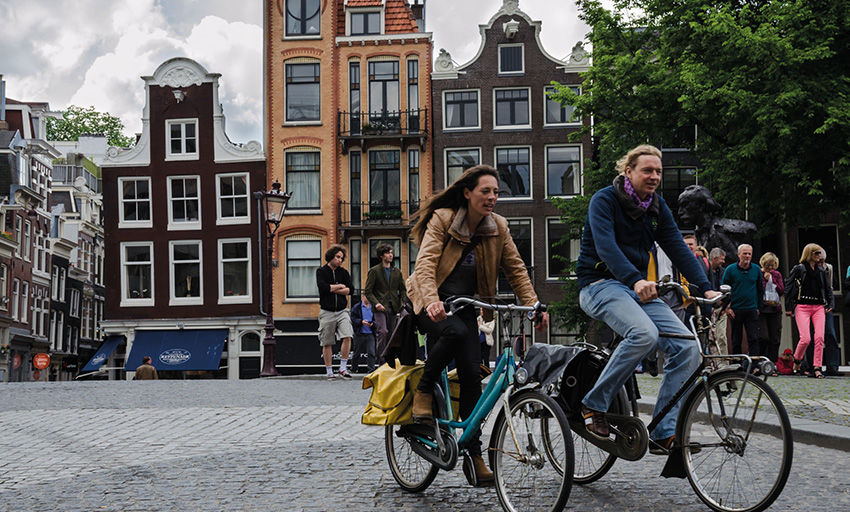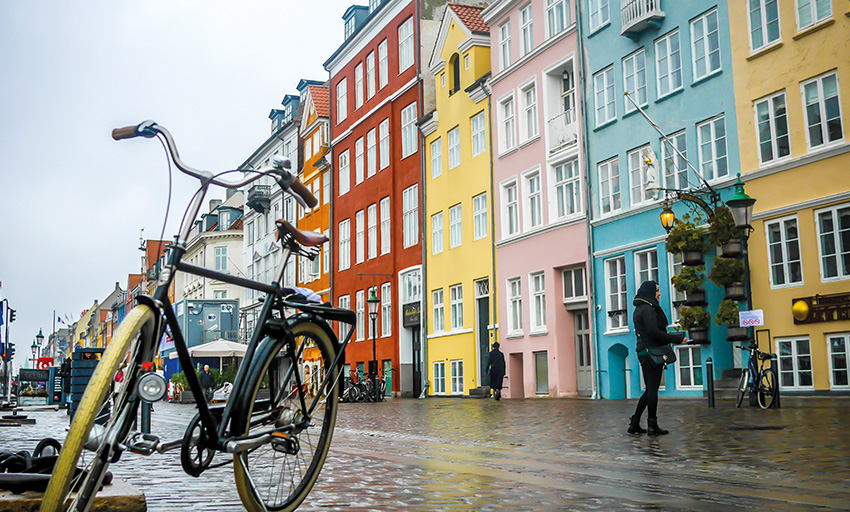Cycling capitals: World leaders

With €290 million to be invested in active travel infrastructure in 2023, cycling in Ireland is set to undergo a major facelift. eolas Magazine surveys some of Europe’s most notable metropoles from a cycling point of view to gauge how they have gained such a status.
Paris
Paris gained international attention for its ambitious approach to cycling in 2021 following the unveiling of its Plan Velo 2021-2026, which aims to make the city 100 per cent cyclable by 2026. Central to this plan is additional funding, with an increased budget of €250 million for the plan, and capitalisation on the Covid-related cycling increases, with 50km of coronapistes (temporary pandemic infrastructure) converted into permanent features of the city’s cycling network.
The 50km of converted coronapistes will account for almost one-third of a planned 180km segregated two-way cycle lane infrastructure due to be constructed under the plan. This network, called the Vélopolitan network, will integrate the RER-Vélo network of the greater Île-de-France region with the network of Greater Paris and specifically calls for “no more dotted tracks, impassable bridges and crossroads where cyclists are sent back into general traffic”. The city will also triple its amount of secure bike parking spaces in an effort to combat bike theft, adding up to 100,000 new spaces, including 1,000 dedicated cargo bike spaces.
Paris is estimated to currently have 700km worth of cycle paths and routes, with 299km of this having been added since current mayor Anne Hidalgo took up the position in 2014, accounting for an increase of 35 per cent. €150 million was invested over the course of Hidalgo’s first cycling plan, with a further €250 million to be invested to ensure that the city is 100 per cent cyclable by the time she leaves office in 2026. It has been estimated that the increases in cycling infrastructure have led to over one million cyclists taking to the streets of Paris every day, an amount that represents almost 10 per cent of the urban area population.
London

London’s cycling infrastructure journey began in earnest with the 2012 publication of the Vision for Cycling in London, in which then-mayor Boris Johnson pledged the delivery of a “proper network of cycling routes throughout the city”.
Johnson’s successor as mayor, Sadiq Khan, announced his intention to “make London a byword for cycling around the world” and the 2018 cycling action plan produced by Transport for London has been the pursuing plan contains aims such as the construction of more than 450km of new cycleway routes by 2024 and the expansion of London’s cycle network to the point that it reaches one-third of Londoners by 2025.
Transport for London’s Travel in London report shows success in the attempts to increase the number of cyclists in the city, with there having been an estimated 300,000 trips taken by bicycle daily in 2000, a figure which rose to 600,000 in 2012 and 900,000 in 2021. In a broader context, the report shows that all modes of transport increased between 2000 and 2019, the last year before the pandemic, but that cycling saw the biggest percentage increase among modes of transport. However, cycling began the period at a much lower starting point than rail and buses, the modes with the second and third largest percentage increases.
Growth has slowed in cycling increases since 2015, the same year that London’s segregated cycling superhighways were opened. Transport for London’s data shows that cyclists in the city are most likely to be white men aged 25 to 44 with a higher-than-average income resident in inner London, meaning that cycling in London, and its infrastructure, is struggling to reach the wider population in terms of gender, class, race, and location. Nonetheless, Travel in London reports that a step change has occurred again since the pandemic, with it “clear from the 2022 counts undertaken in spring following the removal of most pandemic restrictions… that the pandemic was associated with a net step increase in cycling”.
Amsterdam

Bicycles outnumber humans in Amsterdam, a city commonly dubbed the ‘bicycle capital of the world’. More than 60 per cent of trips in the Amsterdam city centre happen on bicycles according the Urban Cycling Institute at the University of Amsterdam. This has been achieved in part through a transport infrastructure approach that is notoriously bike-friendly and car-unfriendly; only 19 per cent of Amsterdam residents use cars every day. Amsterdam is explicitly pursuing the goal of becoming a car-free city, with measures such as one-way systems, roadway narrowing, and barriers utilised in order to cut off car access to central streets that would otherwise be used as through-routes.
Amsterdam contains a total of 767km of cycling lanes and paths across the city, with an average of two million km travelled daily by residents on bikes. The city’s drive to promote active travel is also enabled by the fact that its bike network is 100 per cent integrated into its public transit system, with bike parking garages situated next to train stations. These garages are free for the first 24 hours and €1.25 per day thereafter.
Amsterdam was once known as a car-dependent city in the decades following World War II, when European private car ownership increased exponentially, but heavy road casualty rates – 3,300 people were killed on Dutch roads in 1971, including 450 children – led to a focus being placed upon the provision of safe cycling infrastructure.
Protected bike lanes, now commonplace in the provision of such infrastructure, were pioneered in Dutch cities such as Amsterdam and Utrecht, with a 13-year study of 12 cities supplying separate lanes found that all road user fatalities had decreased by 44 per cent and that all 12 cities had seen increases in their cyclist numbers.
Copenhagen

Each Dane cycles, on average, 1.4km per day, with the citizens of Denmark combining to cycle a total of eight million km daily. Central to this, of course, is the Danish capital of Copenhagen, where 40,000 cyclists cross the Dronning Louises Bro bridge every day. The city was one of the first European locations with a dedicated cycling lane, with one opened in 1892 by esplanade. There are 385km of cycling lanes in Copenhagen today as part of a 4,770km-long national network.
Copenhagen is currently operating under a long-term cycling strategy that ranges from 2011 to 2025, with its ultimate goal that 50 per cent of all trips to work and education will be carried out on bikes by 2025. Unlike cities such as London, Copenhagen began this period of concentrated uptake with cycling already in a strong position; data from 2008 to 2010 showed cycling to be the most popular mode of transport to work or education, accounting for 36 per cent of trips, as compared to 29 per cent for the next most popular mode, the car. In 2019, the rate for cycling trips had risen to 44 per cent. Seven out of 10 Danes over the age of six are said to own a bike, with this number rising to nine out of 10 in Copenhagen.
Copenhagen’s success has been backed by significant investment at the national and municipal level; the Danish Ministry of Transportation dubbed 2022 ‘the year of the bike’ and announced a large cycling infrastructure plan totalling over three billion DKK, with 2022’s 433 million DKK mainly committed to the building of new cycling lanes. Municipal authorities in Copenhagen have invested over one billion DKK in the decade from 2012 to 2022 and pledged another 67 million DKK for 2022.





